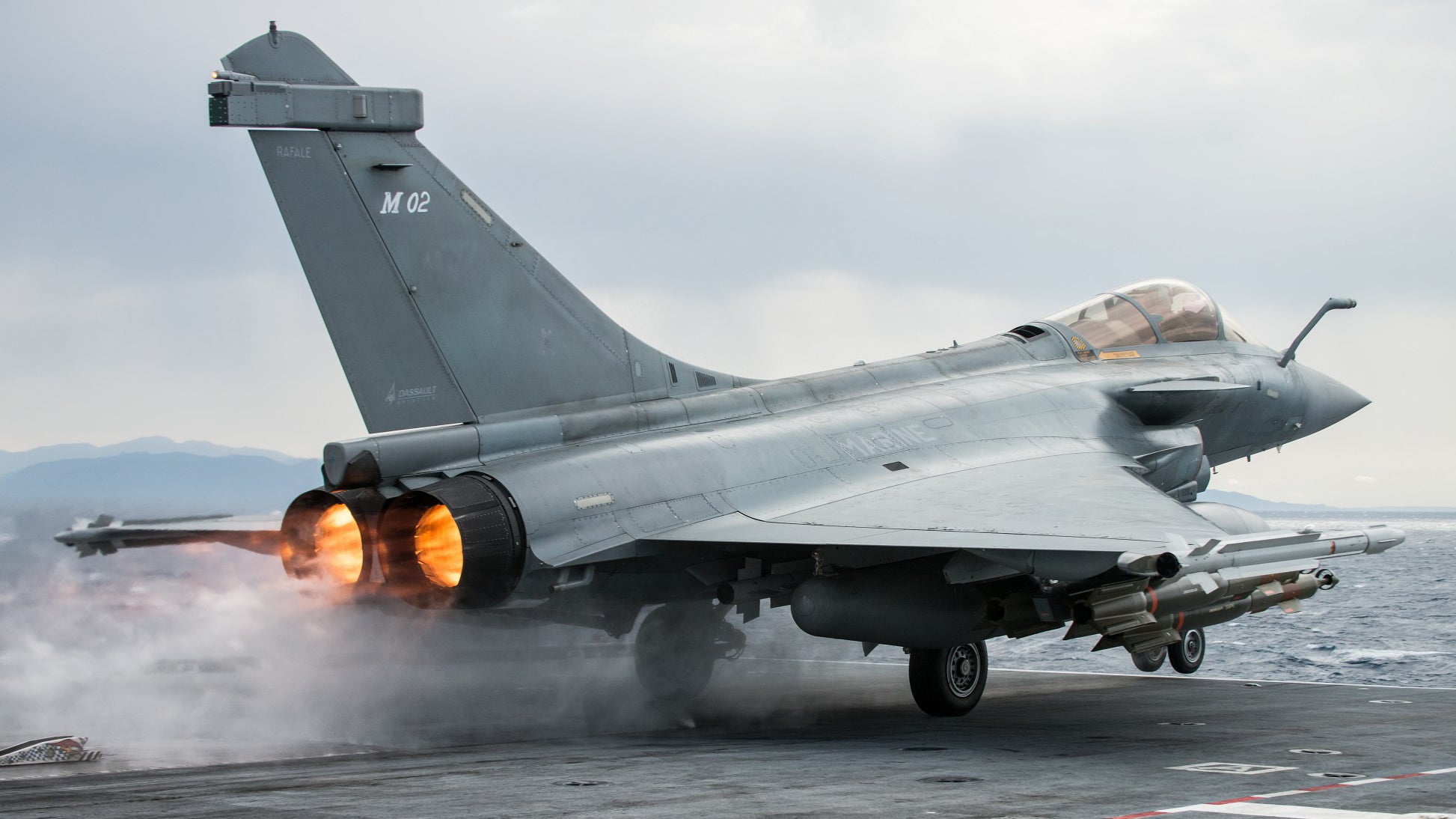This week the Rafale M fighter jet is due to begin tests at India’s naval flight test facility as it goes head-to-head with the F/A-18E/F Super Hornet in the competition to provide the Indian Navy with its new carrier-based combat aircraft. The Rafale, which has already been ordered by the Indian Air Force, comes to India on the back of notable export success, including a huge order for the land-based version from the United Arab Emirates.
Trials of Dassault Aviation’s Rafale M are planned to start on January 6 at Indian Naval Station (INS) Hansa in the southwestern state of Goa, which includes the Shore Based Test Facility (SBTF), with a ‘ski jump’ ramp replicating that found on Indian Navy carriers. Based on the results of these evaluations and other factors, New Delhi will very likely choose from the Rafale or the Super Hornet to provide a deck-launched fighter for its new carrier, INS Vikrant, also known as Indigenous Aircraft Carrier 1 (IAC-1), which is planned to enter service in August this year, after lengthy delays.
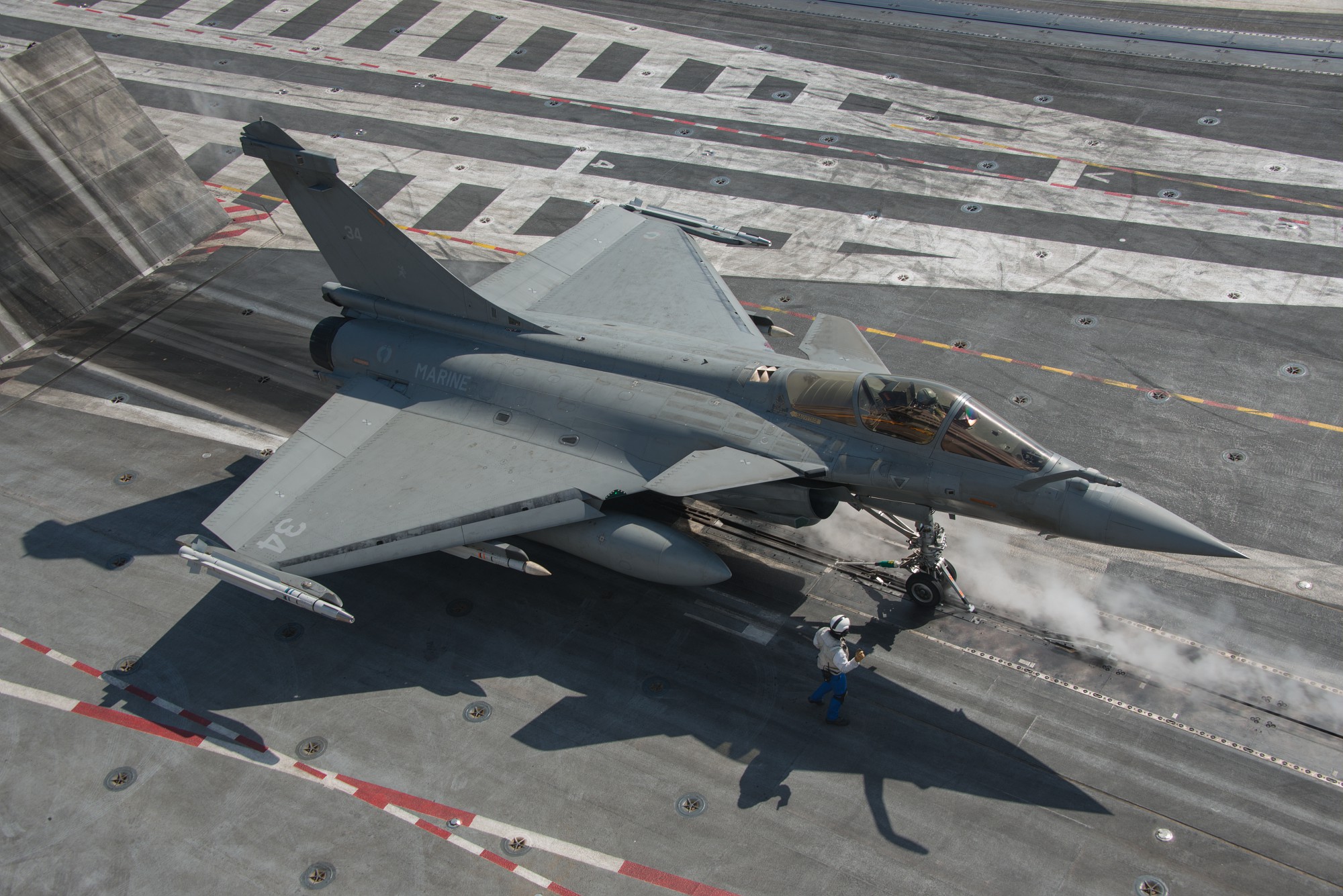
Reports in the Indian media indicate the Rafale M will undergo 12 days of tests at Hansa’s SBTF, apparently the first time that the jet will prove its compatibility with a ‘ski jump’ ramp, used in lieu of catapult launch gear in the short take-off but arrested recovery, or STOBAR concept of operations currently used by India. The SBTF also replicates the carrier recovery process, with arrester wires on the runway for landings.
The Rafale M was developed for the French Navy as the primary aircraft armament of its sole carrier, the nuclear-powered Charles de Gaulle, which is configured with catapult launch gear. The Rafale M was the first variant of the fighter to enter service, initially in an air-defense-only role in 2001. The aircraft has since been successively upgraded, adding new weapons and avionics, including active electronically scanned array (AESA) radar, and taking part in combat operations over Afghanistan, Libya, and the Middle East. The Rafale M has also conducted joint operations from U.S. Navy carrier decks.
The Rafale’s rival, the Boeing Super Hornet, in its latest Block III form, has already been involved in some high-profile ski jump operations using the ground-based ramp at Naval Air Station Patuxent River in Maryland, which you can read more about in this previous article, and watch here. However, the Super Hornet is expected to arrive for further trials at INS Hansa, in March, as well.
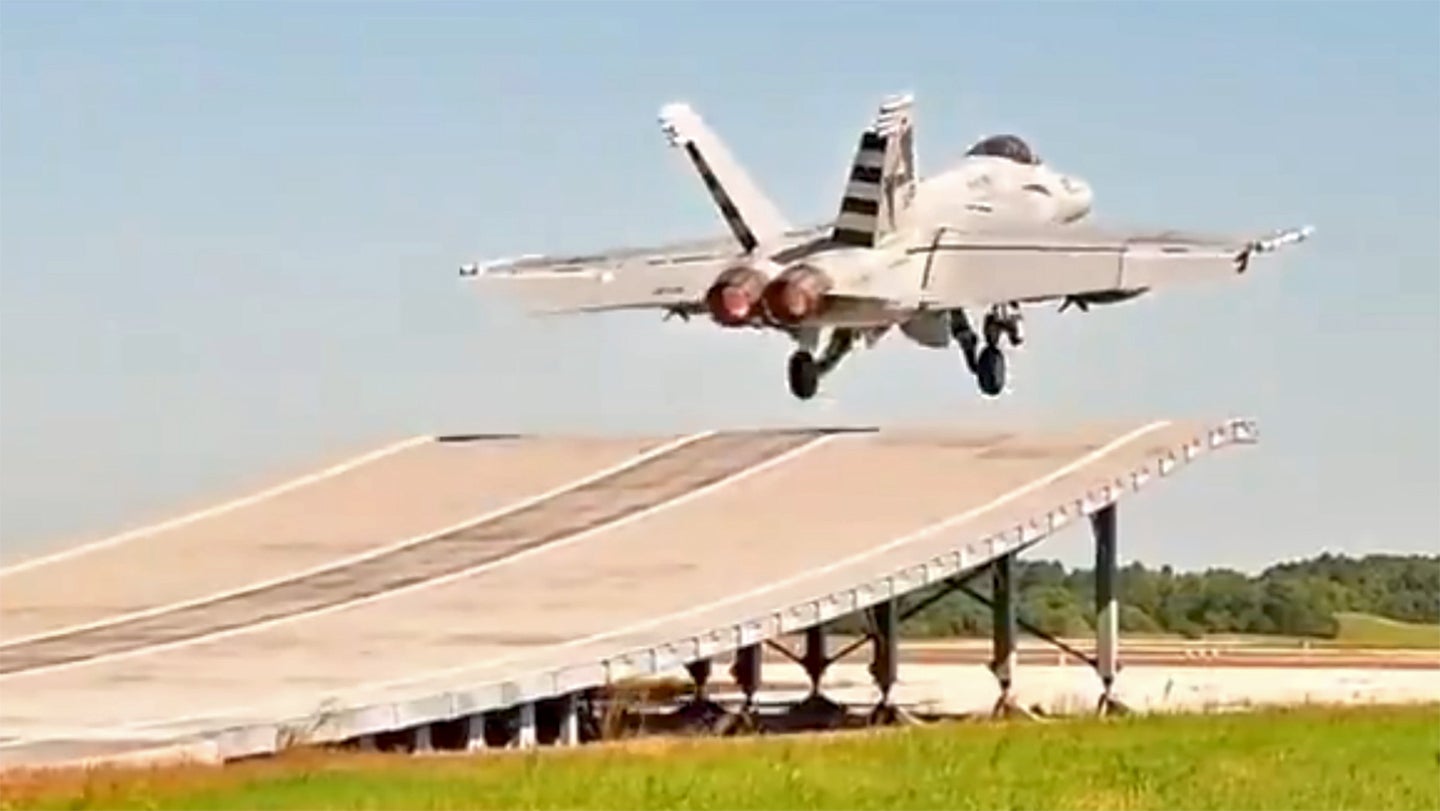
The land-based version of the Rafale is already established in Indian Air Force (IAF) service, including forward-deployment to the Ladakh region, where tensions between India and China include an ongoing standoff that has spilled over into violence. It might be expected that the French jet has a certain advantage, therefore, although the local defense procurement process is notably arcane, and it’s not inconceivable that inter-service rivalry might even count against it. The sale of the Rafale to the IAF has also seen its fair share of controversy, although allegations of irregularities or corruption were ultimately rejected in the Indian courts.
Meanwhile, Boeing has been campaigning heavily to sell the Super Hornet to both the IAF and the Indian Navy, and the United States has, in general, maneuvered itself to become one of the key suppliers of high-end defense technology to India, including AH-64E Apache attack helicopters and P-8I maritime patrol aircraft.
However, both the Rafale and Super Hornet are likely to face more hurdles until they can be operationally fielded on INS Vikrant. As currently configured, the carrier’s elevators, installed on either end of the superstructure, are fairly small. In fact, as we have discussed before, they appear to be scaled to the Russian-made MiG-29K/KUB Fulcrum fighter jet that’s currently in Indian Navy service, aboard the carrier Vikramaditya, the Indian Navy’s flagship.

With Russian consultancy provided for the IAC-1 design, the fact that the warship is optimized for operating the MiG-29K is perhaps not entirely surprising, although it suggests that a degree of modification will be required to handle the larger Rafale or Super Hornet. With the Super Hornet’s wings folded, it spans 30 feet 6 inches, leaving very little room on the elevator, which is 32 feet 10 inches wide. The Rafale, which doesn’t have a wing-fold mechanism, is wider still, at 35 feet 9 inches.
With that in mind, it seems somewhat bizarre that the Indian Navy is now committed to evaluating a pair of deck fighters that can’t currently be accommodated by its forthcoming carrier, at least without some significant changes.
The Hindustan Times
has suggested that the Indian Navy could try and lease “four to five” Rafale Ms from France this year, which would allow crews to become familiar with operations from the land base of INS Hansa, including launch and recovery, while the INS Vikrant undergoes the required adaptations.
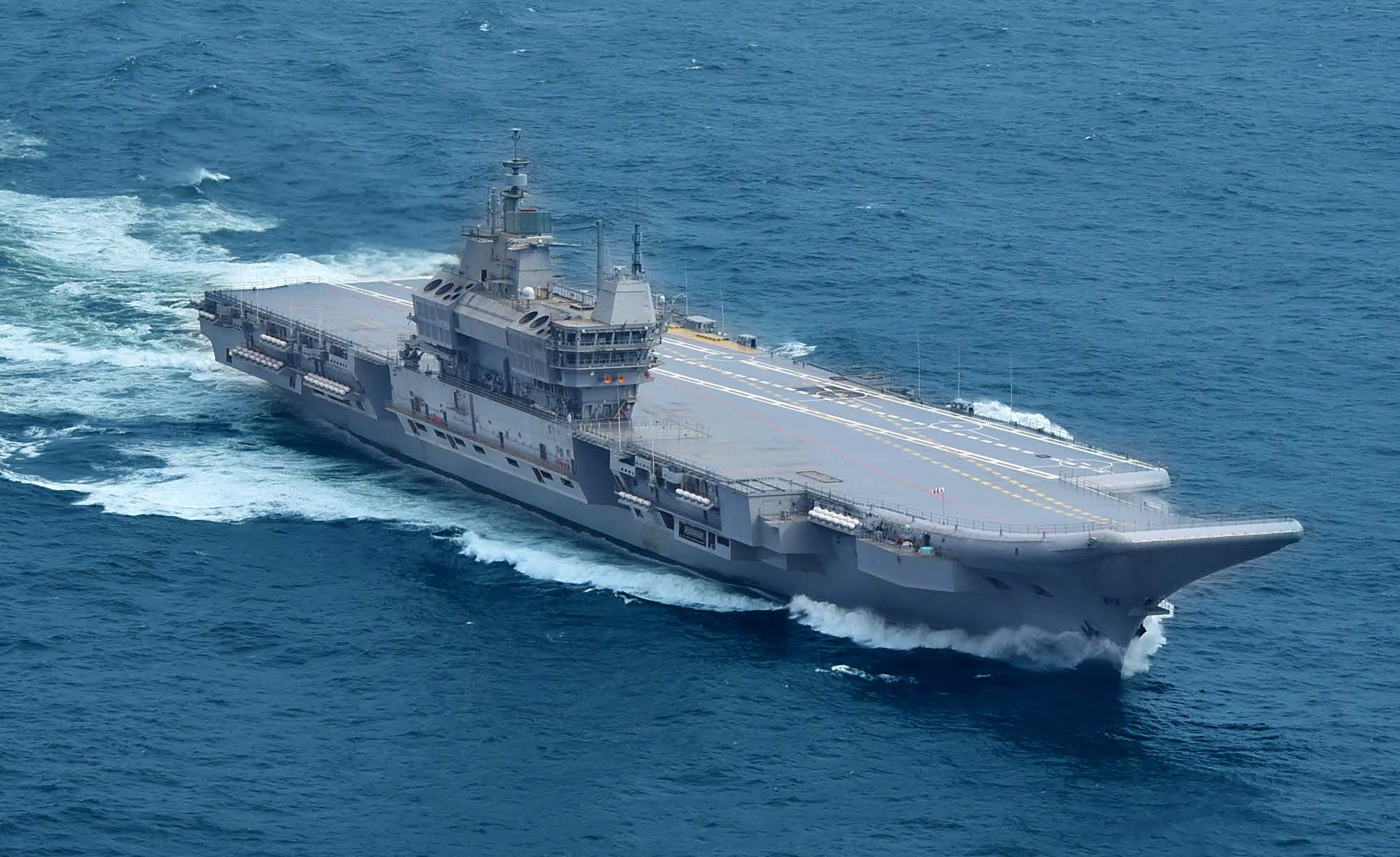
The Indian Navy is also likely looking ahead to its next indigenous carrier, INS Vishal, or IAC-2, which is planned to be significantly bigger, at around 65,000 tons, compared to 40,000 tons for the Vikrant. This new warship is expected to draw upon American and British design contributions and could feature an Electromagnetic Aircraft Launch System (EMALS) instead of the ski jump after the United States approved the transfer to India of related technology. IAC-2 will surely be scaled from the outset to handle fighters larger than the MiG-29K. What’s more, both the Rafale M and Super Hornet are already capable of operating from a catapult-assisted takeoff but arrested recovery (CATOBAR) carrier if India does take this approach for IAC-2.
In the meantime, the Indian Navy continues to operate its fleet of 45 MiG-29K multirole fighters, ordered in two batches and used from the Vikramaditya as well as being shore-based at INS Hansa.
However, there has been considerable effort given to finding a successor to the Russian-made Fulcrum, which has suffered from serviceability and maintenance issues, including a shortage of spare parts.
Hence the evaluation of the Rafale and Super Hornet as part of the Multi-Role Carrier Borne Fighter (MRCBF) competition, which calls for 57 new jets. A Request for Information (RFI) for this was issued back in 2017, but after the design of the IAC-1 — including elevator dimensions — had been determined.
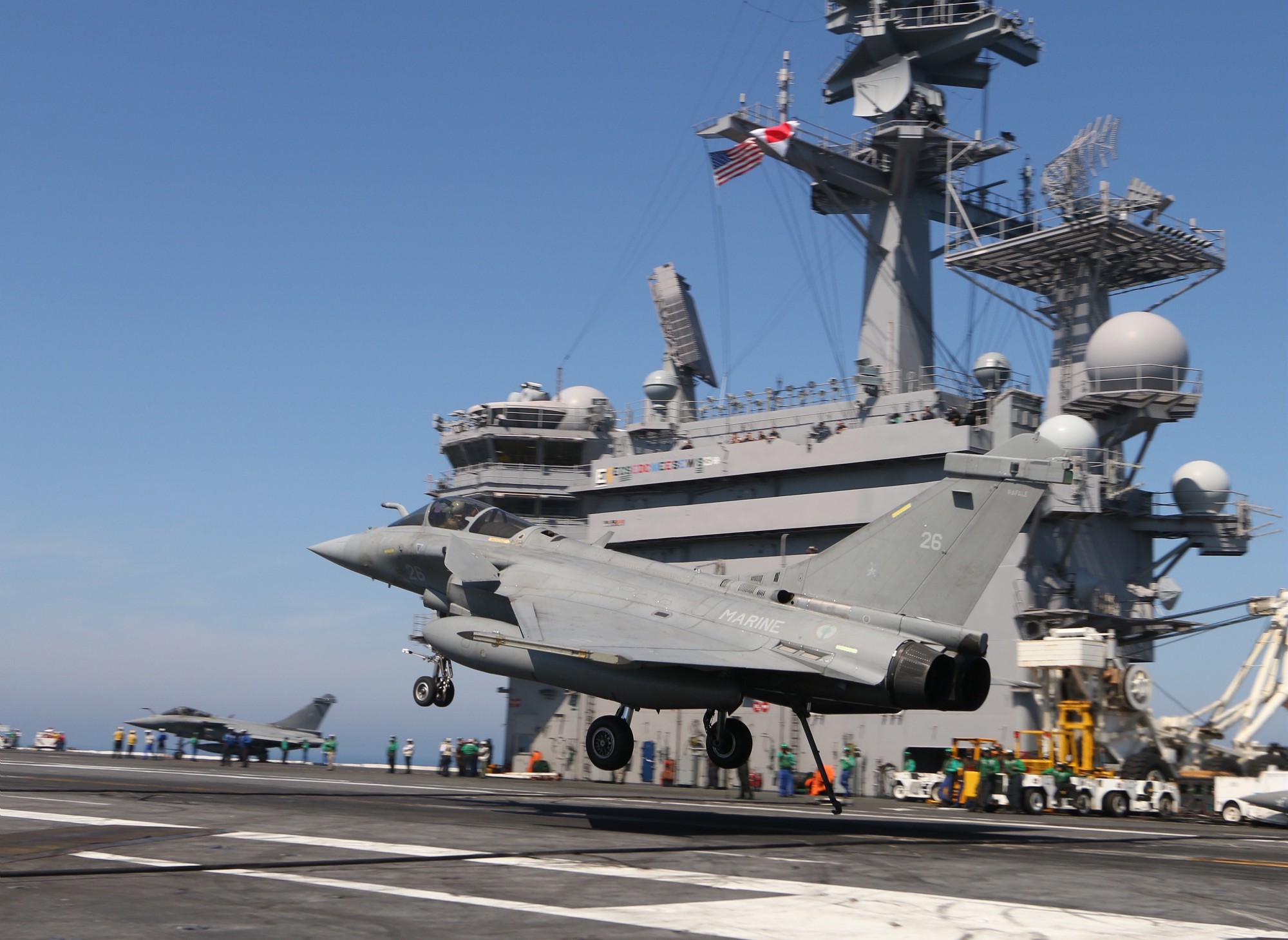
There are other, smaller candidates for the new fighter, including the indigenous HAL Naval Light Combat Aircraft (LCA), a carrier-capable version of the Indian Air Force’s Tejas, but the Indian Navy has already decided against procuring this aircraft. Sweden’s Saab also pitched a carrier variant of its Gripen fighter, but this remains in project form only.
The single-engined Naval LCA is currently only being used for experimental work, including at the SBTF, while India still has hopes that eventually a twin-engine development of the LCA could mature as an indigenous naval fighter, or Twin-Engine Carrier-Based Deck Fighter (TEBDF). That prospect, if feasible, remains many years away, with the most optimistic predictions suggesting service entry in the early 2030s. Procurement of Rafales or Super Hornets before then could also affect the entire future of that program. Perhaps with that in mind, Indian Navy officials have attempted to bring the TEBDF in line with an Indian Air Force requirement for new land-based fighters, although it’s hard to see a clean-sheet design winning over established, in-service designs.

Both the Rafale and Super Hornet are in the running for the same Indian Air Force tender, which calls for 114 aircraft, although Boeing officials have in the past been lukewarm about combining the procurement of F/A-18E/Fs for both services. Boeing Defense’s Ankur Kanaglekar, who leads the company’s strategy for international sales, described the IAF and Indian Navy requirements as “very different.”
All of this is happening against the backdrop of rapid Chinese developments in the field of carrier aviation. While India has now joined the select group of nations to have built an indigenous aircraft carrier, to join the Russian-made INS Vikramaditya, China has two in-service carriers, one of them home-built, plus a new indigenous design taking shape that is expected to feature EMALS rather than a ski jump ramp. China’s fourth carrier could be even bigger than its predecessors, perhaps with nuclear propulsion. In terms of aviation, India’s strategic rival is taking huge strides, with an indigenous carrier-based stealth fighter under test, plus a fixed-wing carrier-based airborne early warning aircraft, and other developments, including carrier-capable drones.
For now, at least, the Indian Navy can look forward to getting an up-close look at the capabilities of two leading Western carrier fighters. While INS Vikrant continues its sea trials in the Arabian Sea and the Indian Ocean, it remains uncertain which fighters will eventually operate from it and the extent of modifications potentially required to make that happen.
Contact the author: thomas@thedrive.com
